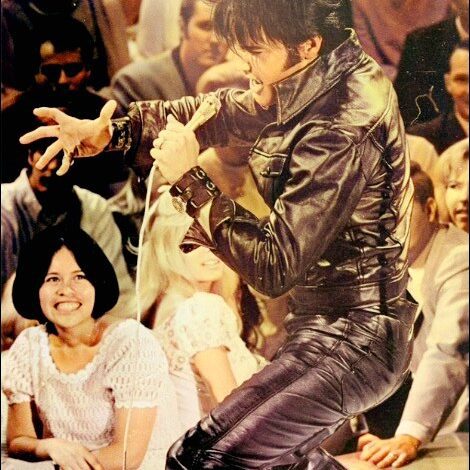For Elvis Presley fans, Netflix’s new documentary Return of the King: The Fall & Rise of Elvis Presley offers a rare window into one of the most pivotal moments in music history: the 1968 NBC Comeback Special. More than a television event, it was a night of reinvention that rescued Elvis’s career, cemented his legacy, and gifted the world one of rock’s most unforgettable looks — the all-black leather suit.
By the mid-1960s, Elvis Presley’s star had dimmed. Once hailed as the rebellious force who shook the foundations of popular music, the King of Rock and Roll had been trapped by Hollywood into formulaic musicals. Instead of gritty, groundbreaking roles like James Dean or Marlon Brando, Elvis was handed forgettable scripts that left him performing novelty songs like Old MacDonald Had a Farm in films such as Double Trouble.

“That, to me, is a crime,” Priscilla Presley reflects in the documentary, her voice heavy with emotion. “It made him a laughingstock. And he knew it.”
Director Jason Hehir, who helmed the documentary, reveals that the endless stream of uninspired films left Elvis deeply frustrated. “He became physically ill at the thought of doing another bad movie,” Hehir explains. “He wanted out. He wanted music again.”
But returning to music wasn’t as simple as walking on stage. Elvis hadn’t performed live in seven years, and the thought of singing in front of an audience again terrified him. According to Hehir, before stepping out onto the stage for the 1968 special, Elvis nearly backed out. “He almost didn’t leave his dressing room,” Hehir says. “He had horrible stage fright, even from the very beginning of his career. But once he got out there, he transformed. He was the most comfortable man in the world.”
That night, Elvis wasn’t just singing — he was reclaiming his throne.
The performance is remembered not only for the raw energy he delivered but also for the look that defined it. His black leather outfit became a symbol of rebellion, charisma, and artistic resurrection. Yet, the suit almost never existed. The inspiration came from a photograph of Elvis astride a Harley Davidson, dressed in leather much like Marlon Brando in The Wild One. Producer Steve Binder saw the photo and encouraged costume designer Bill Belew to build on the image. Belew designed a custom, high-collared leather suit that was both retro and cutting-edge.
Under the sweltering stage lights, Elvis sweated through the set, but the suit amplified his aura rather than diminished it. The leather, slick with perspiration, only made his presence more magnetic. Every movement, every note, reinforced the message: the King was back.
The impact was immediate and staggering. The special drew massive television viewership, and the soundtrack climbed into Billboard’s Top 10. Suddenly, Elvis was no longer a fading star chained to second-rate films; he was once again the voice of a generation. “He hadn’t performed in seven years,” Hehir notes. “Those screaming teenage girls from the 1950s were now mothers. And yet, he still had them in the palm of his hand.”
From that night forward, Elvis’s career pivoted. Hollywood had failed to give him the acting career he craved, but music restored his artistry and dignity. The 1968 special proved that his talent had not been diminished by years of neglect or poor management. Instead, it reminded the world of the electrifying performer who had first shocked America in the 1950s.
Priscilla Presley describes the moment as a rebirth. “That was the real Elvis,” she says. “That’s who he always wanted to be — raw, powerful, and connected to the music.”
The black leather suit became more than just clothing; it became an emblem of rebellion and renewal. Much like Brando’s biker jacket in The Wild One, Elvis’s outfit symbolized defiance and independence, but with a personal twist: it wasn’t about playing a role, it was about rediscovering himself.
The success of the comeback special reenergized his career, leading to sold-out tours and iconic performances in Las Vegas. While Hollywood never gave him the legacy roles he once dreamed of, Elvis reestablished himself where he belonged — on stage, commanding audiences with a voice and presence no one could match.
Nearly five decades after his death, the 1968 comeback remains a testament to resilience. It showed that even when the world underestimates true talent, it cannot be buried forever. For Elvis, that night was more than a television special; it was a resurrection.
The leather suit still resonates today because it captures more than a fashion moment. It symbolizes an artist who refused to be forgotten, who fought through fear and doubt, and who reminded the world why he was the King.
Elvis Presley’s story, told through the lens of that iconic night, is a reminder that legends don’t fade away. They stumble, they fall, but they rise again — often stronger, sharper, and more unforgettable than before.

